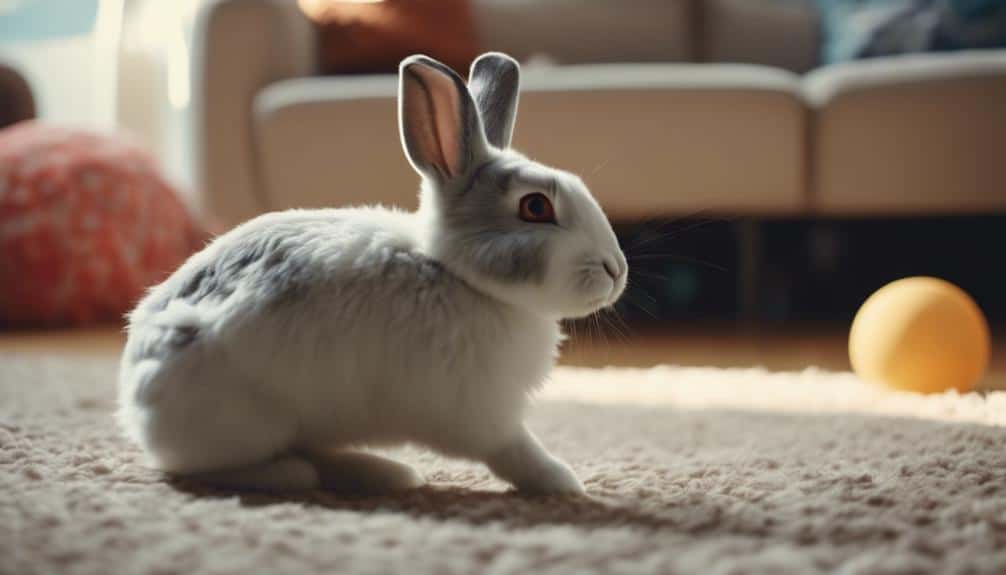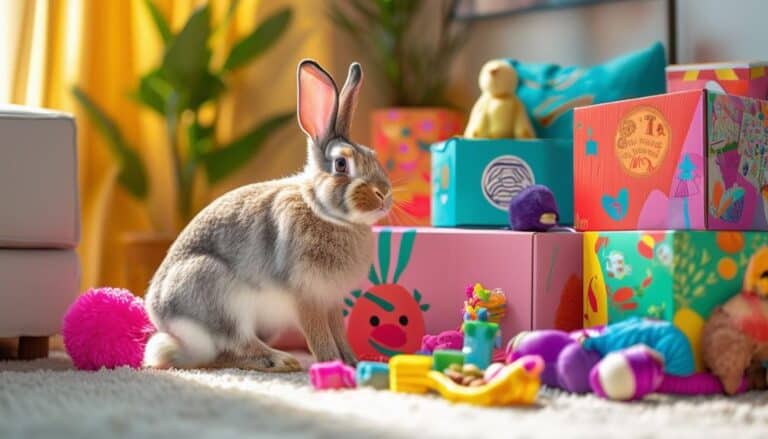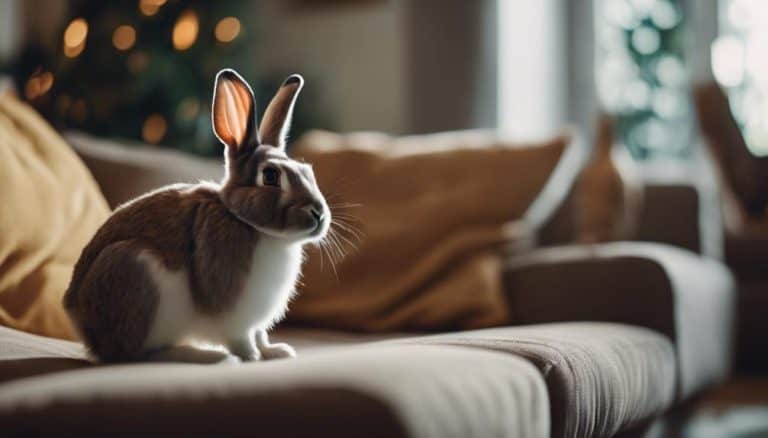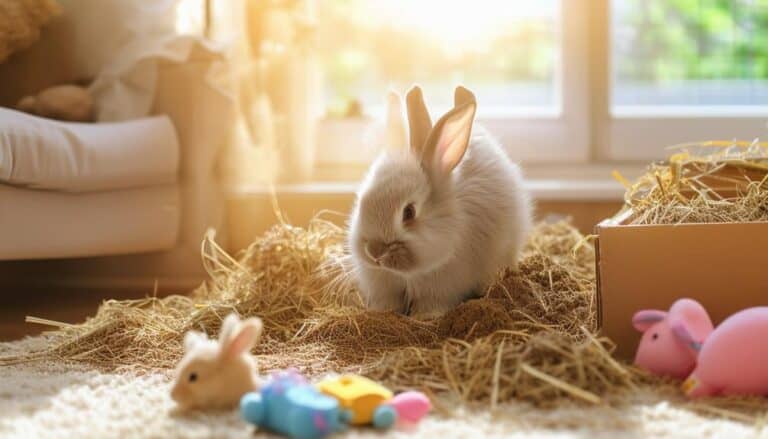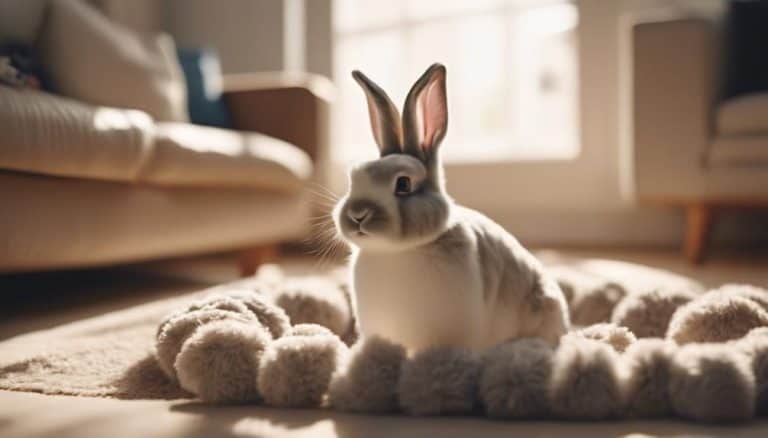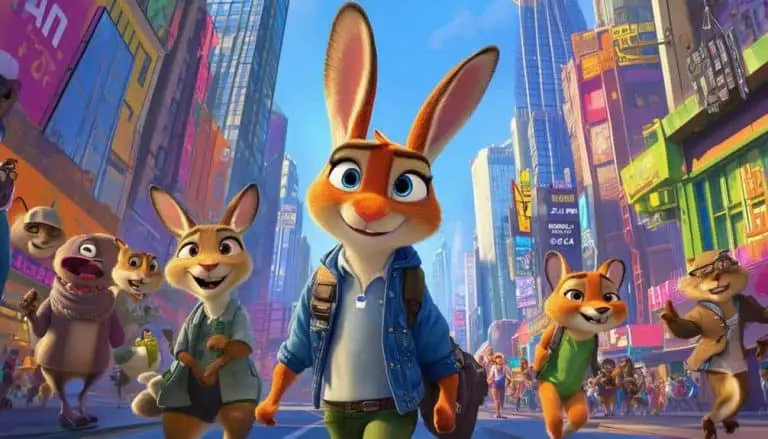Why Does My Pet Rabbit Run Circles Around Me?
Have you ever wondered why your pet rabbit runs circles around you? This intriguing behavior can arise from several motives, ranging from signaling a desire to mate to simply seeking your attention.
Your rabbit might be showing signs of happiness, excitement, or even anticipating a treat. However, it could also indicate stress or anxiety, suggesting a need for a more stimulating environment.
By exploring these possibilities, you can better understand your rabbit’s needs and help create a happier, more enriching space for them. Curious about how to interpret and respond to this behavior?
Mating Behavior
During mating season, female rabbits often display circling behavior as a way to signal their readiness to potential mates. This behavior isn’t just random; it’s a well-documented mating ritual.
When your female rabbit starts running circles around you, she’s not merely seeking attention. Instead, hormonal changes during the breeding season drive this instinctual behavior. It’s her way of showcasing fertility and attracting mates.
From a clinical perspective, understanding this natural instinct can be essential for managing your rabbit’s behavior. Circling intensifies during breeding seasons, influenced by hormonal surges that prepare female rabbits for potential mating opportunities. You might notice this behavior not only around you but also around other rabbits if you have more than one. This repetitive motion is a clear indicator of her reproductive state.
Recognizing the mating ritual can help you address and manage the situation more effectively. If you’re not planning to breed your rabbit, consider consulting with a veterinarian about spaying options. This can help mitigate the hormonal changes driving the behavior, offering a more peaceful environment for both you and your rabbit.
Understanding these natural instincts empowers you to provide better care and freedom for your pet.
Seeking Attention
When your rabbit runs circles around you, it’s usually seeking your affection and interaction. This behavior signals a desire for play, treats, or simply attention, and responding positively can reinforce this communication.
To satisfy its needs, engage in interactive games or offer treats immediately after circling.
Craving Your Affection
Circling behavior in pet rabbits is a clear indicator that they’re seeking your attention and affection. This behavior isn’t just random; it’s a purposeful form of communication. When rabbits engage in circling behavior, they’re often signaling their desire for interaction and bonding with you. By understanding this behavior, you can effectively respond and strengthen your relationship with your pet.
When your rabbit runs circles around you, it’s their way of saying they need:
- Attention: They want you to notice and engage with them.
- Affection: Physical touch, such as petting, can be very comforting.
- Communication: This is their method of telling you something important.
- Playtime: They may be enthusiastic to play and interact with you.
Responding appropriately to your rabbit’s circling behavior can reinforce positive habits and enhance the bond between you. Providing timely pets, engaging in playtime, and showing affection are essential actions.
Clinically, it’s observed that rabbits exhibiting this behavior regularly are usually well-adjusted and happy when their social needs are met. By recognizing and responding to these cues, you’re not only meeting their emotional needs but also fostering a deeper, more fulfilling relationship with your furry friend.
Desire for Interaction
Your rabbit’s circling behavior serves as a direct communication method to signal their desire for interaction and attention. When your pet runs circles around you, it’s not just a random act; it’s a deliberate attempt to engage you. This behavior often suggests that your rabbit is seeking play, affection, or even treats. Recognizing this can help you respond appropriately to your rabbit’s needs.
From a clinical perspective, consistent circling can be interpreted as a strong indicator that your rabbit craves interaction. Rabbits are social animals and thrive on companionship. By running circles, they’re basically saying, ‘Notice me!’ Ignoring this behavior can lead to a pet feeling neglected, which might result in stress or behavioral issues.
To support this interaction, consider rewarding your rabbit with treats or engaging in play when they exhibit circling behavior. This not only reinforces their desire for positive interaction but also strengthens your bond.
Diagnostic approaches suggest that consistent positive reinforcement can mitigate any potential negative behaviors stemming from unfulfilled attention needs. So, when your rabbit circles around you, take it as an invitation to interact, play, and show them affection. This guarantees your pet remains happy and mentally stimulated.
Happy and Excited
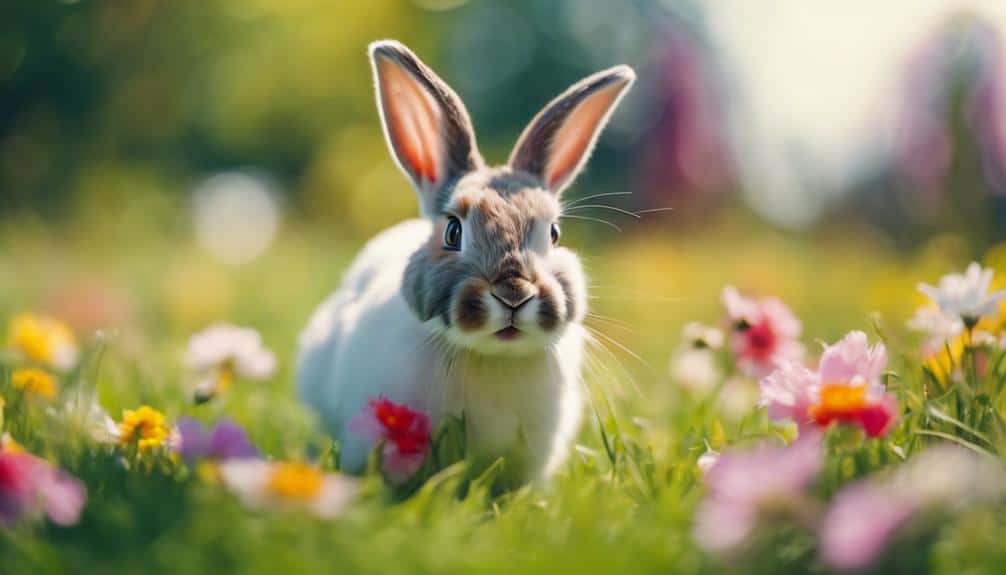
Observing your rabbit running in circles around you can be a clear indicator of its happiness and excitement. This behavior is a diagnostic sign that your pet is delighted and comfortable in your presence. When a rabbit runs in circles around you, it’s not just a random act; it’s expressing joy and seeking attention.
This interaction is a fundamental part of their social behavior, as they thrive on love and attention from their owners.
Here are some key behaviors to look for that indicate your rabbit is happy and excited:
- Binkying: High jumps with twists that show pure joy.
- Flopping: Rolling onto their side, indicating relaxation.
- Licking: Gentle grooming of your hands or face, showing affection.
- Tooth purring: Soft grinding of teeth, a sign of contentment.
Excessive circling behavior can sometimes indicate a need for more interaction or mental stimulation. Ensuring you provide ample play opportunities and spend quality time with your rabbit will keep them engaged and reduce the need for constant circling.
Treat Expectation
When a rabbit runs circles around you, it’s often anticipating a treat or seeking attention. This circling behavior is a vital communication tool your rabbit uses to express its desires.
By running circles, your rabbit is likely expecting a treat, and this anticipation can be a sign of a healthy, engaged pet. It’s not just about the treat; it’s about the interaction and the positive behavior reinforcement.
From a clinical perspective, recognizing this behavior is essential. When your rabbit circles, it’s a perfect opportunity to engage with it. Offering a treat or initiating playtime in response can strengthen the bond between you and your pet. This reinforces the positive behavior and creates a structured environment where your rabbit feels understood and secure.
Moreover, acknowledging this circling behavior as a form of communication helps you meet your rabbit’s needs more effectively. By responding with treats or playtime, you validate their attempts to communicate, which is vital for their mental and emotional well-being.
This approach not only fosters a strong bond but also ensures your rabbit feels its desires are met in a positive, engaging way.
Stress and Anxiety
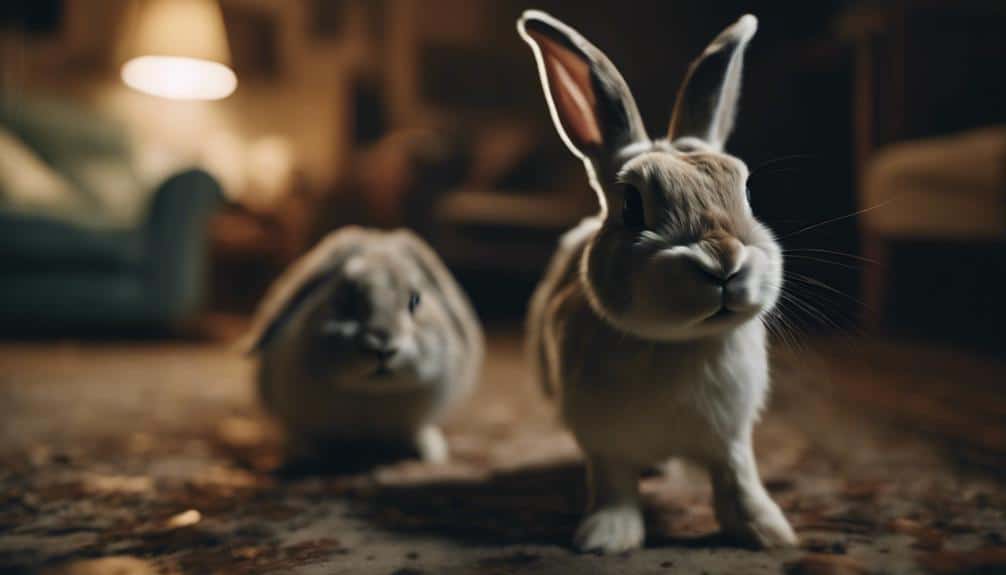
Circling behavior in rabbits can sometimes be a sign of stress or anxiety, triggered by factors such as loud noises or sudden changes in their environment. If your pet rabbit exhibits this behavior, it’s important to understand the underlying causes and take steps to mitigate them.
To help your rabbit, consider the following:
- Reduce noise levels: Keep your rabbit’s environment quiet and free from sudden loud sounds.
- Stable environment: Avoid frequent changes in their living space, as rabbits thrive in predictable settings.
- Enrichment activities: Provide toys, tunnels, and other engaging items to keep your rabbit mentally stimulated.
- Consult a veterinarian: Seek advice from a specialist in small animals to address stress and anxiety issues effectively.
Territory Marking
Rabbits use territorial marking behaviors, such as running circles around humans, to assert dominance and establish boundaries. This circling behavior stems from territorial instincts inherent in rabbits, driving them to claim ownership of their environment. When your rabbit runs circles around you, it’s not just playful behavior; it’s an assertive action to mark its territory and establish dominance.
Rabbits possess scent glands on their chin and cheeks, which they utilize during these circling behaviors. By rubbing their chin or cheeks against you, they leave behind a scent that signals ownership. This is a clear indication of their territorial boundaries, marked by their specific scent.
In clinical observations, this dominant behavior is common among rabbits that are particularly assertive about their space. It’s essential to recognize that this form of territory marking is a natural aspect of rabbit behavior. Understanding these actions can help you interpret your rabbit’s needs and behaviors more accurately.
Providing Enrichment
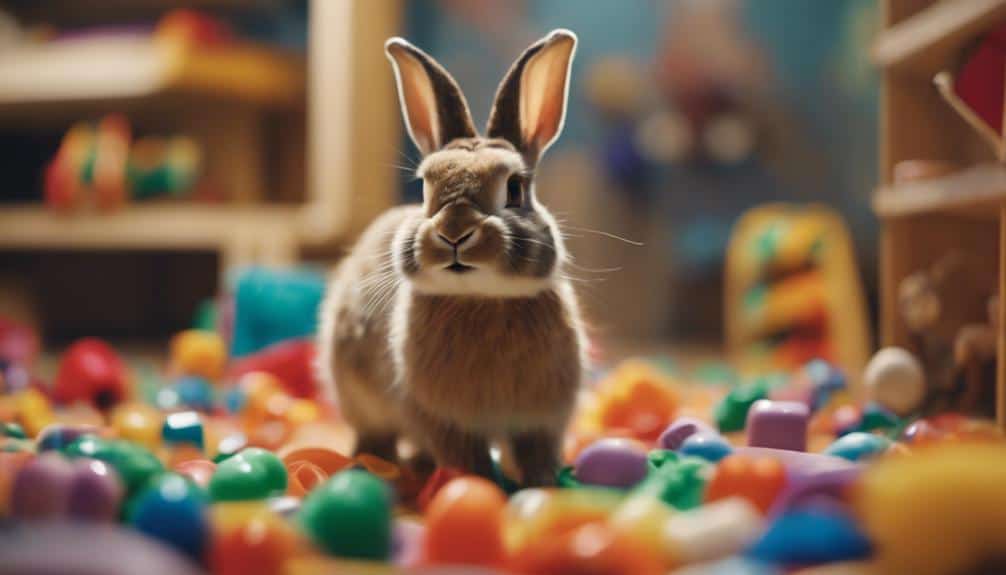
Understanding your rabbit’s territorial behaviors is the first step; however, providing proper enrichment is vital to ensuring their mental stimulation and overall well-being.
Enrichment activities can effectively prevent boredom-induced circling behavior. By incorporating toys, tunnels, and puzzle feeders, you can keep your rabbit mentally stimulated and engaged.
To maintain your rabbit’s interest and prevent habituation, regularly rotate and introduce new enrichment items. Consider creating a stimulating environment with the following elements:
- Interactive toys: Encourage foraging or chewing to satisfy natural instincts.
- Tunnels: Provide opportunities for exploration and mimic natural burrowing behaviors.
- Puzzle feeders: Challenge your rabbit’s mind and promote problem-solving skills.
- Digging boxes: Engage their instinctual digging behavior.
These enrichment activities not only prevent excessive circling but also foster a more balanced and content pet.
Ensuring that your rabbit’s environment is diverse and engaging is essential. By offering various interactive and stimulating options, you can help your rabbit lead a more fulfilling life, reducing the likelihood of repetitive, boredom-driven behaviors.
Managing Circling
To manage circling behavior in rabbits effectively, it is important to first understand the underlying causes, such as hormonal changes or excitement.
Redirect your rabbit’s energy through structured play and exercise routines to minimize excessive circling.
Additionally, provide mental stimulation with toys and puzzles to engage your rabbit and reduce boredom-induced behaviors.
Understand Rabbit Behavior
When your pet rabbit starts circling, it often reflects their energetic mood and desire for interaction, making it important to understand the underlying motivations behind this behavior. Recognizing the nuances of rabbit behavior can help you effectively manage circling tendencies.
Circling behavior could be a sign of:
- Positive reinforcement: If you respond to circling with treats or petting, your rabbit learns this behavior gets them attention.
- Mating ritual: Female rabbits, especially unspayed ones, might circle to attract mates.
- Environmental enrichment: Boredom can drive rabbits to seek interaction through circling.
- Health issues: Persistent circling might indicate an underlying health problem.
Addressing circling behavior involves a multi-faceted approach. First, consider spaying female rabbits to reduce mating-driven actions. Second, incorporate environmental enrichment by providing toys and interactive playtime. Third, use positive reinforcement wisely—reward calm behavior to encourage it. Finally, consult a rabbit-savvy vet for a thorough health assessment if circling becomes excessive or concerning.
Understanding rabbit behavior and maintaining a consistent routine can create a harmonious environment for both you and your pet. By addressing their needs proactively, you make certain your rabbit feels secure, engaged, and well-cared-for.
Redirect Excitement Energy
Managing your rabbit’s circling behavior involves providing structured playtime and exercise to help redirect their excess excitement energy. Implementing a daily routine that includes specific periods for active engagement can greatly reduce the frequency of your rabbit running circles around you.
Interactive toys and tunnels are excellent tools for channeling your rabbit’s energy in a productive way. These items not only provide physical exercise but also keep your rabbit mentally stimulated, preventing boredom that can lead to circling behavior. Make sure your rabbit has access to a variety of these toys to maintain their interest and engagement.
Creating a calm environment is essential. Rabbits can become overstimulated by loud noises, sudden movements, or an overly busy household. Identifying and minimizing these triggers for excitement can help maintain a more relaxed atmosphere, reducing the need for your rabbit to burn off excess energy through circling.
Through a combination of structured playtime, appropriate exercise, and a calming environment, you can effectively manage and redirect your rabbit’s excitement energy. This approach not only curtails the circling behavior but also fosters a healthier and happier living situation for your pet.
Provide Mental Stimulation
Providing mental stimulation through interactive toys and challenges is essential for managing your rabbit’s circling behavior. By keeping your rabbit’s mind actively engaged, you can prevent the boredom that often leads to excessive circling.
To achieve this, incorporate various elements into their environment.
- Toys and Puzzles: Offer a variety of chew toys and puzzle feeders that stimulate their natural foraging instincts.
- Interactive Games: Engage your rabbit in simple games, like hide-and-seek with treats, to keep them mentally active.
- Tunnels and Hiding Spots: Set up tunnels and hiding spots to provide a dynamic environment that encourages exploration.
- Daily Routine: Establish a consistent daily routine for feeding, playtime, and exercise to reduce stress and promote stability.
Conclusion
Understanding why your rabbit circles you involves recognizing signs of mating behavior, attention-seeking, happiness, treat anticipation, stress, and territory marking.
By providing enrichment activities and a stable environment, you can address their mental and physical needs.
Monitoring and interpreting these behaviors with clinical insight helps guarantee your rabbit’s well-being.
Always consult a veterinarian for persistent or concerning actions to rule out underlying health issues.
Your proactive care fosters a happier, healthier rabbit.

